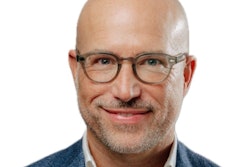As of July 2021, the number of former students in the U.S. who stopped out without completing their academic pursuit and getting a credential reached 40.4 million, a 3.6% increase from the previous year, according to a new report from the National Student Clearinghouse (NSC) Research Center. Dr. Doug Shapiro
Dr. Doug Shapiro
This demographic, the Some College, No Credential (SCNC) population, grew by 1.4 million, the report noted. This growth – observed in all 50 states and Washington, D.C. – was attributed to the continued postsecondary education disinterest of near all of the 39 million SCNC students last identified (over 94%) and the additional 2.3 million newly identified SCNC students.
The second annual progress report, “Some College, No Credential Student Outcomes” analyzes data from the 2021-22 academic year, detailing SCNC student growth on a state-by-state basis.
“This year’s report suggests that there is an increasingly missed opportunity for states and institutions to re-engage with SCNC students even as the SCNC population is growing,” the report noted.
U.S. territories had by far the biggest increase of students who stopped out of school (10.3%), followed by Delaware (7.9%) and Arizona (6.6%). Oregon saw the least SCNC growth with 2.3%.
According to the report, annual re-enrollment also decreased (2.4 to 2.1%), along with student completion rate within a year of re-enrolling (6.4 to 6.2%). And fewer SCNC students re-enrolled (8.4%), earned a credential within a year after re-enrolling (11.8%), or persevered into a second year of school (4.3%) than the previous year.
In general, demographic characteristics of the SCNC population have stayed mostly the same. A small majority of the population were composed of women, 18.5 million, compared with 18.3 million men.
And racial and ethnic minority students continue to be overrepresented.
Black students make up 19.4% of SCNC students with race and ethnicity data but are only 13.8% of the overall undergraduate population, the report stated. Latino students are 23.6% of SCNC students and 20.9% of total undergrads. Meanwhile, white students comprised 44.9% of SCNCs but 51.2% of undergraduates.
"All this to say that this population represents a certain level of opportunity for states and institutions that are looking to increase college enrollment and college attainment rates, and particularly to reduce equity gaps among college degree recipients, degree earners,” said Dr. Doug Shapiro, executive research director for the NSC.
However, Shapiro said that roughly 2.9 million (7.3%) of the SCNC population are “potential completers,” students who have made some significant academic progress towards completion – at least two years’ worth of full-time equivalent enrollment within the last 10 years. These promising students are three to four times more likely to re-enroll, he said.
SCNC students returning to higher education were most likely to return to community colleges even if previously enrolled in a different type of school, Shapiro said.
“If you look, for example, at students who previously enrolled at a four-year public institution, almost half of them come back at a community college, 44%. The next largest group of them, 17.5%, go back to another or the same public four-year college,” Shapiro said. “Almost across the board, the number one destination is a community college, regardless of where they stopped out of. And the second largest is the same type of institution that they stopped out of.
“One exception there is students who previously enrolled at an online institution – their number one return destination is again a primarily online institution, 35%."
And those who return tend to not move or transfer to other schools once re-enrolled, said Dr. Mikyung Ryu, NSC director of research publications.
“As long as they come back and reenroll, then they are most likely staying put where they first reenroll without transferring out to another institution,” Ryu said. “And they stay put until they graduate. The overall success and progress rate is almost equivalent to some of those high-potential traditional college undergraduate students.
“So not changing institutions often means shorter time to completion and less likelihood to lose their credits by switching institutions," she added.















